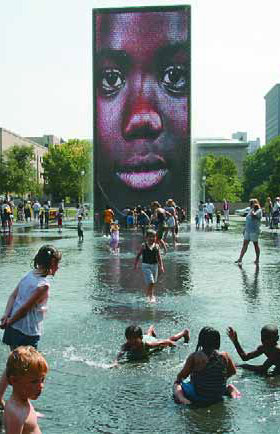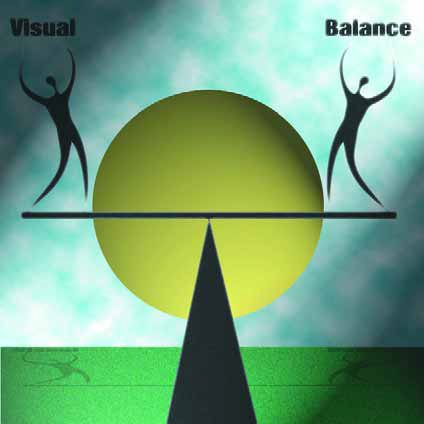water wall
In July last year, the city of Chicago unveiled its newest civic landmark: Millennium Park, a world-class artistic and architectural extravaganza in the heart of downtown. At a cost of more than $475 million and in a process that took more than six years to complete, the park transformed a lakefront space once marked by unsightly railroad tracks and ugly parking lots into a civic showcase. The creation of the 24.5-acre park brought together an unprecedented collection of
Let’s journey to the Lone Star State once again to see an appropriately grand-scale waterfeature – and another exuberant collaboration between renowned architects Philip Johnson and John Burgee, who also devised the Fort Worth Water Gardens highlighted in the January 25, 2012 edition of this newsletter. This time, we’ll stop downstate in Houston to see the monumental Williams Waterwall in
In December 2004, WaterShapes introduced ‘The Platinum Standard,’ a registry of projects that embodies watershaping…
When I was a kid, the conventional part of my education in environmental design came in helping my father, Jay Stang, plant parkways and blocks of Pinus Pinea across the city. The unconventional part - the part that apparently took firmer root as I grew up - had me admiring the plate he'd made from hardwood with the dozen split avocado pits he'd carved and mounted on the surface; it also had me listening to my mother, Judy Campbell, tell me that the earth was here first, that the garden already exists and that pathways, watershapes and structures are best built around what we find there. Those unconventional lessons - one about creativity and vision, the other about respect for nature and a method for approaching it - have stayed with me through the years and have given me access to a number of incredible projects. As is the case with most intriguing and fascinating designs, the one seen here flowed from a client with whom I developed a close creative connection that resulted in a free exchange of ideas¬ - a synchronized spontaneity that became a pattern for the entire design process. She always had strong thoughts about what she wanted, but she allowed me to interpret and express her ideas based on our conversations and the nature of the site. As designers, it's not unusual for us to be called on to use our skills and figure out what a client such as this one really wants and then suggest ideas we think will work. I call this process "environmental psychiatry" because, while so many clients have a sense of what they want and a laundry list of general ideas, few have a
When I was a kid, the conventional part of my education in environmental design came in helping my father, Jay Stang, plant parkways and blocks of Pinus Pinea across the city. The unconventional part - the part that apparently took firmer root as I grew up - had me admiring the plate he'd made from hardwood with the dozen split avocado pits he'd carved and mounted on the surface; it also had me listening to my mother, Judy Campbell, tell me that the earth was here first, that the garden already exists and that pathways, watershapes and structures are best built around what we find there. Those unconventional lessons - one about creativity and vision, the other about respect for nature and a method for approaching it - have stayed with me through the years and have given me access to a number of incredible projects. As is the case with most intriguing and fascinating designs, the one seen here flowed from a client with whom I developed a close creative connection that resulted in a free exchange of ideas¬ - a synchronized spontaneity that became a pattern for the entire design process. She always had strong thoughts about what she wanted, but she allowed me to interpret and express her ideas based on our conversations and the nature of the site. As designers, it's not unusual for us to be called on to use our skills and figure out what a client such as this one really wants and then suggest ideas we think will work. I call this process "environmental psychiatry" because, while so many clients have a sense of what they want and a laundry list of general ideas, few have a
Most people I know have a favorite vacation spot, a favorite leisure-time activity and a favorite form of self-indulgence. In creating backyard environments for these folks, we as watershapers and landscape designers often find ourselves able to roll elements of one, two or all three of those "favorite things" up in a single package in ways that closely reflect our clients' passions and personalities. At my company, we strive to make a direct connection with those preferences by letting our prospective clients know that we want to enable them to vacation in their own backyards and come home to outdoor environments that epitomize the good life. In some cases, that means
One of the great things about working with different architects and designers the way we do is that, as builders of pools, spas and other watershapes, we enjoy opportunities to work across a broad range of design styles and sensibilities. In this instance, we're focusing on one of our favorite Southern California architects, Mark Singer. He's known regionally for crisp, clean, minimalist designs and is well regarded for his work on breathtaking lots along the coast in Laguna Beach, Newport Beach and other well-heeled cities overlooking the Pacific Ocean. To our good fortune, most of his projects include pools, spas, courtyard waterfeatures, outdoor sculptures and other amenities that enhance and extend his contemporary designs. Our most recent project with Singer was completed in the summer of 2004 at an older home in the beautiful beach community of Corona del Mar. The house itself was not originally designed by Singer, but it had been remodeled by him several times in the years since. In fact, so much has been done at this point that it's practically impossible to distinguish this residence from projects he has pursued from the ground up. COMPLETING A SCENE The homeowner is a wealthy land developer, a self-made man and a major fan of
Over and over again, I've said and written that the water should not be seen as the most important element in a well-designed space. In fact, I've said it so often that it's almost become a cliché, and that's a shame, because it tends to trivialize the valid point that all elements in a given space - plants, rocks, hardscape, lighting, artwork and water - need to co-exist in visual balance to create an overall experience. This concept of visual balance should indeed be the heart and soul of all our exterior designs, but it's apparent
I'm steadily reminded of one key point: No matter how talented any one of us might be, the work ultimately is not about us. For intensely creative people equipped with the necessary measures of self-confidence and ego, that point can be tough to accept and absorb, but it's true: For all our skills, we nonetheless work with our clients' visions, and the reality is that creating sympathetic designs for them takes time, patience and lots of effort. As a result, I'm passionate about uncovering what my clients are truly after in their garden and watershape designs. It's an investment of time and energy at the onset of the relationship that always




















